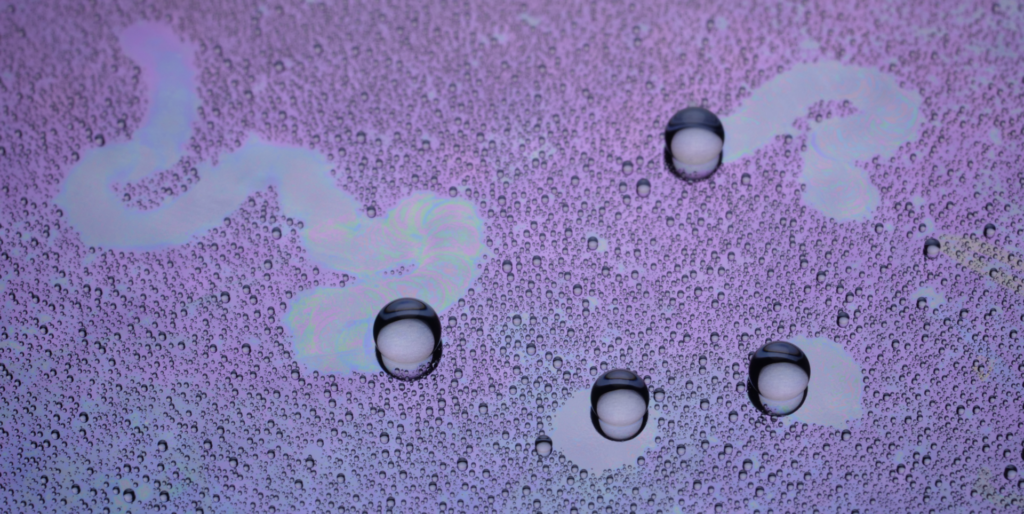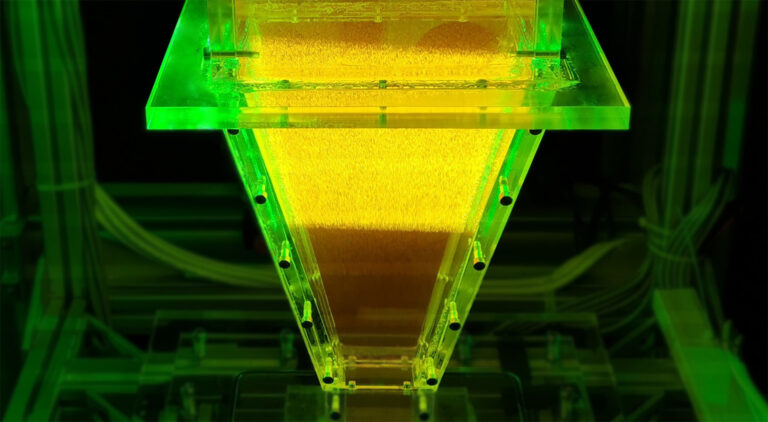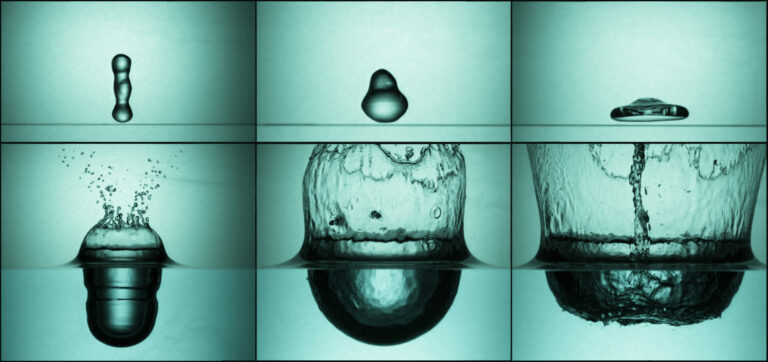Mechanical Engineering
Dancing droplets’ new spin on water harvesting
Complex patterns of motion emerge when water drops condense on an oiled surface.

A more efficient way to capture fresh water from the air could be inspired by a phenomenon of motion first glimpsed in bowls of breakfast cereal.
KAUST researchers have observed that, when water droplets condense from the air onto a cold surface coated with oil, the droplets commence a complex dance.[1] This motion — akin to a process known as the Cheerios effect whereby the floating cereal tends to cluster due to surface tension — could help to speed up the harvesting of water from the atmosphere in arid regions such as Saudi Arabia.
“We are interested in designing surfaces that can promote condensation of water, which has important heat-transfer and water-harvesting applications,” says Marcus Lin, a research fellow in the lab of Dan Daniel, who led the research. On a typical solid surface, condensed droplets stick to the surface with minimal motion. “Think of water condensing on a cold soda can,” says Lin. “The droplets only move once they grow big enough for gravity to pull them down.”
Daniel, Lin and their collaborators had the idea that adding a thin film of oil would lubricate the surface, resulting in highly mobile droplets that would free up space for further droplet condensation, boosting condensation rates. The idea worked — but the complex ways in which the droplets moved was a complete surprise, Daniel says.

Once the droplets grew to a critical size, they began to move across the oil in a distinct pattern akin to an elaborate dance. “They initially moved in a serpentine manner, before transitioning into circular motions, and then back again,” says Lin. “These motions occurred across scales ranging from micrometers to several centimeters, and they lasted for hours.”
The driving force for the process is that — like Cheerios in milk — water droplets floating on the oil are drawn toward their neighbors. The larger droplets’ motion is driven by energy released as they swallow up smaller droplets in their path.
The moving droplets redistribute the oil film and switch from a serpentine to a circular motion when the film becomes locally depleted. Once the local oil rebuilds, the snake-like dance resumes.
Such devices that can efficiently capture water from the air by simple condensation, with no energy input, are widely sought as pressure grows on freshwater sources, Daniel says. “By optimizing the collective motion of condensing droplets, we can greatly increase condensation rates and hence design more efficient water-harvesting systems,” he says.
The team plans to further explore the mechanisms driving droplet motion, particularly investigating the transition from serpentine to circular movement. “Another key aspect is to explore potential applications, particularly in heat-transfer enhancement and water harvesting,” Lin adds.
Reference
- Lin, M., Kim, P., Arunachalam, S., Hardian, R., Adera, S., Aizenberg, J., Yao, X. & Daniel, D. Emergent collective motion of self-propelled condensate droplets. Physical Review Letters 132, 058203 (2024).| article
You might also like

Mechanical Engineering
Innovative strain sensor design enables extreme sensitivity

Mechanical Engineering
Turbulent flow shows surprise patterns that could help boost efficiency

Mechanical Engineering
Machine learning model identifies gas molecules

Mechanical Engineering
Making a splash: unraveling the impact of large water droplets

Mechanical Engineering
Sour gas has sweet potential for hydrogen production

Mechanical Engineering
Underwater air pockets smooth out the bumps

Chemistry
Squeezing more from carbon dioxide

Applied Mathematics and Computational Sciences




